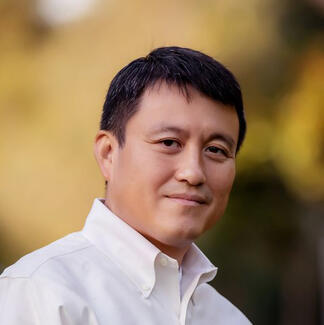
Shanhui Fan’s radiative cooling heats up Energy Solutions Week
'Energy Solutions Week' showcased innovative energy technology developments.
Stanford Energy Solutions Week was a four-day event held at the Frances C. Arrillaga Alumni Center. Hosted by Precourt Institute for Energy, the invite-only event was the main annual technical symposium to showcase Stanford’s energy-related research this year. Each of the four days focused on a different topic, including energy systems and long duration energy storage.
During a panel discussion about energy conversion technologies, Professor Shanhui Fan, described his research on using passive radiation to generate cooling.
Passive radiation cooling is done by using highly-reflective materials to passively reflect light and heat out into space. Using this effect, engineers can essentially cool the material to below ambient temperature, explains Shanhui.
“With radiative cooling, you’re trying to harvest the coldness of the universe. The idea was to develop a material that strongly reflects sunlight by radiating. In our experiment on the roof of a Stanford building, you can get a temperature below ambient air passively without electricity,” reports Shanhui.
Another use of this technology is to generate electricity from temperature differences.
Shanhui says, “Almost any material can be made into a radiative cooler, including a solar panel. Based on this fact, we have recently done an experiment where we put a thermoelectric generator on the back of a solar panel and showed that you could actually get electricity at night.”
While the technology is far from being commercial, research from his lab shows the potential of combining tried-and-true solar panels with thermoelectric generators.
Excerpted from Stanford Daily, “From nighttime solar panels to algae biofuels, emerging research presented at Energy Solutions Week”